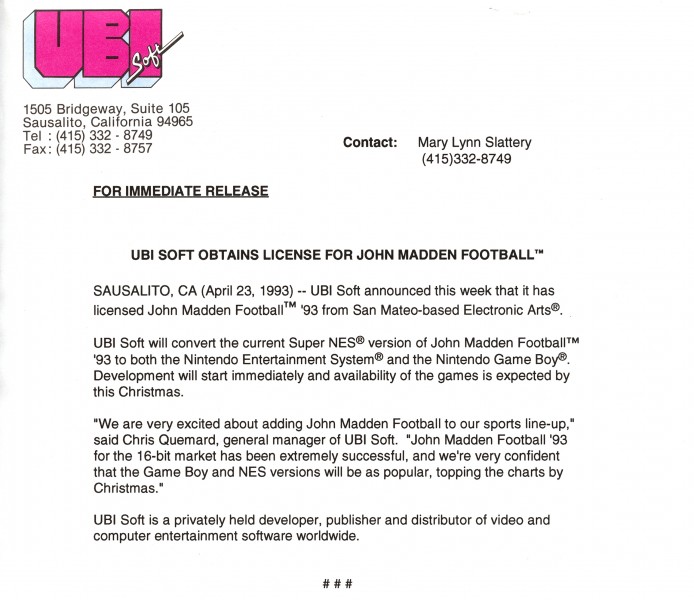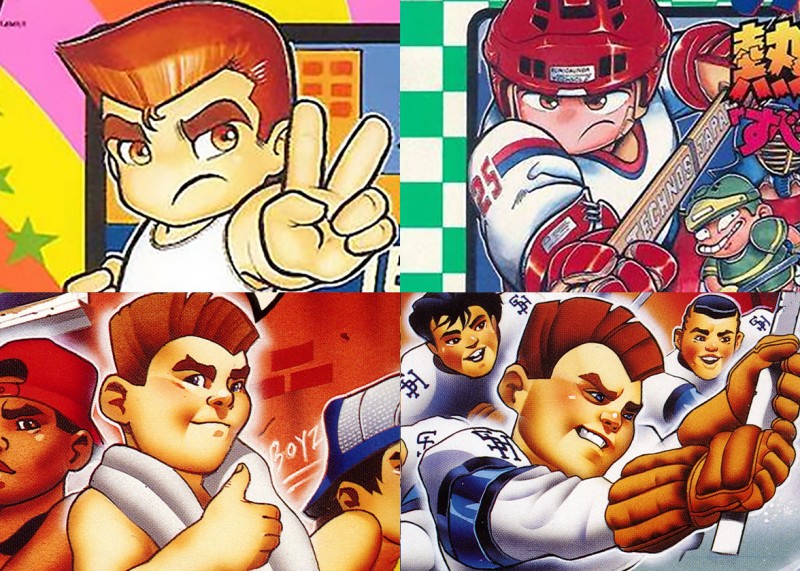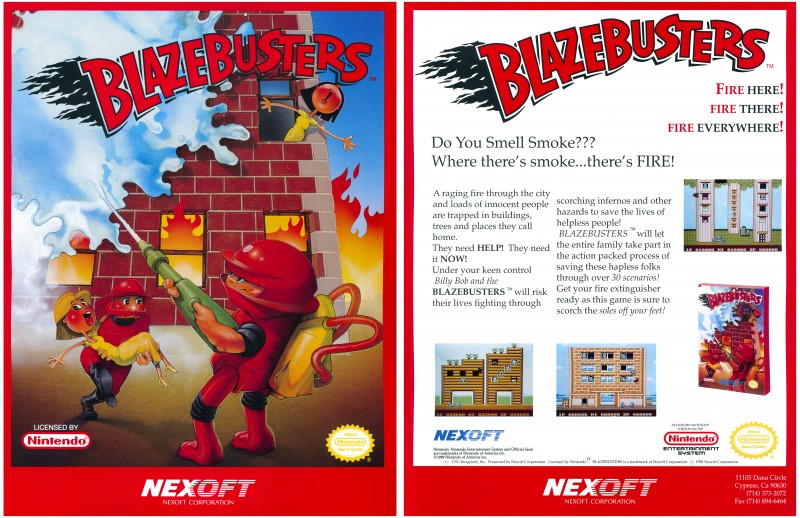From the Game Informer Archives: Lost NES Games!

[Video Game History Foundation founder Frank Cifaldi has been digging through Game Informer’s closets to help organize and document over 26 years of priceless video game history! Occasionally he’ll spotlight some of his findings here. Learn more about the project on this episode of The Game Informer Show.]
Game Informer has made no secret of The Vault, its collection of over twelve thousand video games from around the world, going all the way back to the industry’s roots. It’s a massive, labyrinthine room filled with floor-to-high-ceiling shelves, each of them crammed with what seems to be at least one copy of every game, for every system imaginable, that has ever made its way into the office. And that’s great...if you’re into that sort of thing.
As for me, I’m more interested in the weird stuff. I run a nonprofit called The Video Game History Foundation, and what we’re focused on is making sure video game’s more ephemeral material – advertising, promotional goodies, vintage slides and photographs, behind-the-scenes stuff, etc. – is documented and preserved alongside the games themselves. Which is why I was thrilled to be able to dig into what Andrew Reiner once described as the Vault’s “less sexy counterpart”: GI’s dusty old filing cabinets.
These filing cabinets are filled with press releases, promotional flyers, film, and other material that was sent to the magazine going all the way back to its 1991 inception and ending somewhere in the early 2000s, when companies started e-mailing this stuff instead. It is an almost perfectly-preserved tomb of video game public relations throughout the 1990s – in fact, one of the four cabinets had to be drilled open for me, its caregivers having lost the key ages ago. For a video game “archaeologist” like myself, it is a goldmine.
It’s going to take a long, long time to document everything that’s in there (we’re going in order by publisher name, and we’re still in the A’s... ), but last time I was in there, I spent some me-time going through and cherry-picking material related to unreleased games for the good ol’ 8-bit NES, a subject matter I’m particularly fascinated by. I thought it might be fun to share some highlights from my findings here.

Here is a set of two matching Hudson flyers from early 1993. While the Super Nintendo version of Beauty & the Beast came out (and was... decent), its NES counterpart did not – at least not here. It saw a limited release in some parts of Europe, where the NES market was still healthy, but here in the U.S., it was practically on life support. The box are you’re seeing here, while similar to what you’ll find in Europe, is unique in that it uses the movie’s original English title.

As for Buster Bros. (a conversion of the bubble-popping arcade game that is sometimes called Pang), the NES version was not released anywhere – in fact, it wasn’t ever shown off in playable form, to my knowledge, as no screenshots have ever turned up.

Here’s a real stumper from Ubisoft. Can you guess who it is? Anyone?
I’ll give you a minute.
Read the hints, they’re helpful.
Okay, I’ll just tell you: it’s John Madden, of Madden Football fame! In 1993, Ubisoft (or as it called itself at the time, “UBI Soft”) licensed the 16-bit game John Madden Football ‘93 from Elelctronic Arts, as it was porting it to both the NES and the Game Boy. Here’s the original announcement press release, also from the cabinets, which I’m reproducing here more or less just so you can see Ubi’s adorable old logo:

We don’t know why, but neither the NES nor Game Boy conversions of the title (both, incidentally, by NMS Software) ever made it to market, and no playable prototypes of the game have ever been found.
Interestingly enough, the September/October 1993 issue of Game Informer previewed it!

It looks like GI was sent a preview version of this game at some point, though it’s no longer in the office (it was probably sent back – ROMs were expensive and were used as spare parts back in the day,.UBI might have needed them back to erase and burn a copy of Jimmy Connors Tennis or something). However, it’s not a major loss. I actually recognize these screenshots: they’re from a completely non-interactive demo that does nothing but cycle through three different screens. There’s no gameplay, or even animation - it’s a simple demo of what the graphics were going to look like. It’s actually unknown whether this game was ever playable at all!

Here is the cover and a single page from an American Technos booklet from 1992, talking about its upcoming 8- and 16-bit titles. Specifically we’re focusing on Crash ‘N the Boys Ice Challenge, a fun little arcade-style hockey game that came out in Japan but never shipped here. It looked like this:

If you know your NES library, you might recognize those characters from one of several NES games that came out here (maybe River City Ransom, or Super Dodge Ball, or Nintendo World Cup). Here in the U.S., those games were three completely separate franchises sold by completely different publishers. But in Japan, where they originated, they were all part of the same franchise, revolving around kids attending Nekketsu High School. The star off those games was Kunio-kun (middle-left in the above screenshot).
By 1992, Technos had opened its own U.S. office and was set to start self-publishing its Kunio games here under a unifying banner. Kunio-kun of Nekketsu High wasn’t exactly English-friendly, so what we were given instead was “Crash ‘n the Boys” of Southside High. Even the art direction got a Western facelift for an American audience that had not yet embraced Japanese aesthetics.

In 1992 they announced Crash ‘n the Boys: Street Challenge (a sort of street olympics game) and Crash ‘n the Boys: Ice Challenge, and even started teasing a third game, Soccer Challenge. Unfortunately for would-be Nekketsu fans in the West, Street Challenge would be Crash’s only outing. In fact, we wouldn’t see another Kunio game here until 2008’s Super Dodgeball Brawlers on the DS – that’s 16 years!

Here’s Blazebusters from Nexoft (aka ASCII), a delightful and goofy Arkanoid-style bouncing ball game, where your ball is actually replaced by a firefighter bouncing around, putting out fires by bouncing off of them (just like real life), and rescuing victims from windows. If that sounds like your thing, I highly recommend tracking down the Famicom version under its original title, Flying Hero.
Blazebusters is particularly interesting to me because it’s one of two completely separate failed attempts to bring this game to the U.S. – way back in 1989, an electronics company called Sony started a video game division and announced three titles: all of them localized versions of Japanese games, and all of them with “Super” in the title. There was Flying Hero (as Super Rescue), Super Pinball (as, uh, Super Sushi Pinball), and Super Dodgeball. Only the latter saw release, with Sony going on to focus more on developing games in the UK and, later, making its own game console.
The flyer in Game Informer’s drawers is by far the best version of Blazebuster’s packaging art I’ve seen, so I was delighted to find it.

Here’s Parker Brothers’ Trivial Pursuit, which is of course based on its board game of the same name. These are among the only screenshots we’ve ever seen of a supposed NES version, but they’re a bit of a mystery for me: they don’t look like they’re coming from an NES at all, and yet, they don’t match any version of Trivial Pursuit I’ve ever seen.

Also from Parker Brothers, here’s Drac’s Night Out. This is a game about Dracula putting on Reebok Pump sneakers to run around and murder innocent people. No, I’m not making this up. Reebok was endorsing a kid’s game where the main mechanic was to murder humans using horrible death traps and then devour their blood.
Lucky for us, the game is preserved and is generally available if you know where to look. I happen to like it.

And finally, here’s Capcom’s California Raisins. If Reebok endorsing a murder spree wasn’t weird enough for you, how about raisin farmers from California trying to make raisins cool by giving them sunglasses and licensing them to the people who make Mega Man?
If you weren’t around in the 80s, it’s kind of hard to explain why California Raisins was ever a thing. And if you were... well, it’s still pretty hard. I had toys of these things and I have no idea why.
This ad was a great find, as it uses the traditional Capcom house style of the time, something that for a lot of us was really iconic and exciting, and emblematic of what was arguably that company’s golden years. Finding a “lost” entry in that series was really exciting for me.

Get the Game Informer Print Edition!
Explore your favorite games in premium print format, delivered to your door.
- 10 issues per year
- Only $4.80 per issue
- Full digital magazine archive access
- Since 1991









